I really did not want to tackle the hump in my living room floor myself. Seriously. I’m 52 and not exactly physically fit. If we’re being totally honest, my champagne taste wants to just pay people to do this shit, but my beer wallet isn’t having any of it.
So after getting 2 wildly different quotes, it was clear – to me at least – that the only way I would ever have a flat or nearly flat living room floor was if I did it myself. Let me start by saying that this post is in no way, shape, or form meant to be a tutorial or a how-to. If I had money, I would still push this house down in a heartbeat, but since I don’t have money at least now I have a normal looking living room floor.
How it Started…
After a month of reading, researching and watching YouTube videos, I tore up my living room subfloor starting with the old tile and 1/2″ underlayment.
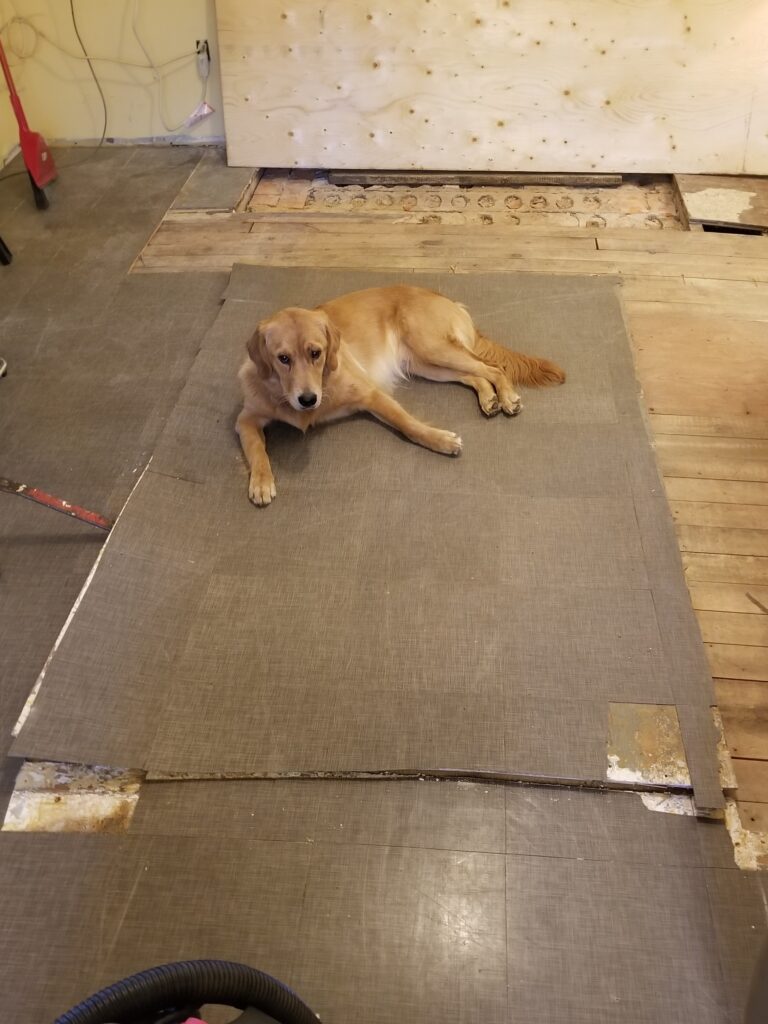
If you’re looking for it, you can probably see how much the floor humps up in the middle. Those bricks at the top of the picture are the story of that hump. My house used to have a fireplace but back in the 40’s when it was built, the geniuses decided a footing really wasn’t needed for a tall skinny chimney. Inevitably the chimney started tipping away from the wall and we tore it down when I did the siding. As the chimney fell back, it lifted the front of the hearth and created the hump.
Once that underlayment was gone, it really became apparent how bad the subfloor was. With floor joists on 24″ centers it’s a good thing I never got into fish keeping as a hobby. The floor could not have carried the weight of a fish tank. Some of the planks were so thin, I honestly don’t know how the couch didn’t just end up in the crawl. That 1/2″ underlay was working hard you guys.
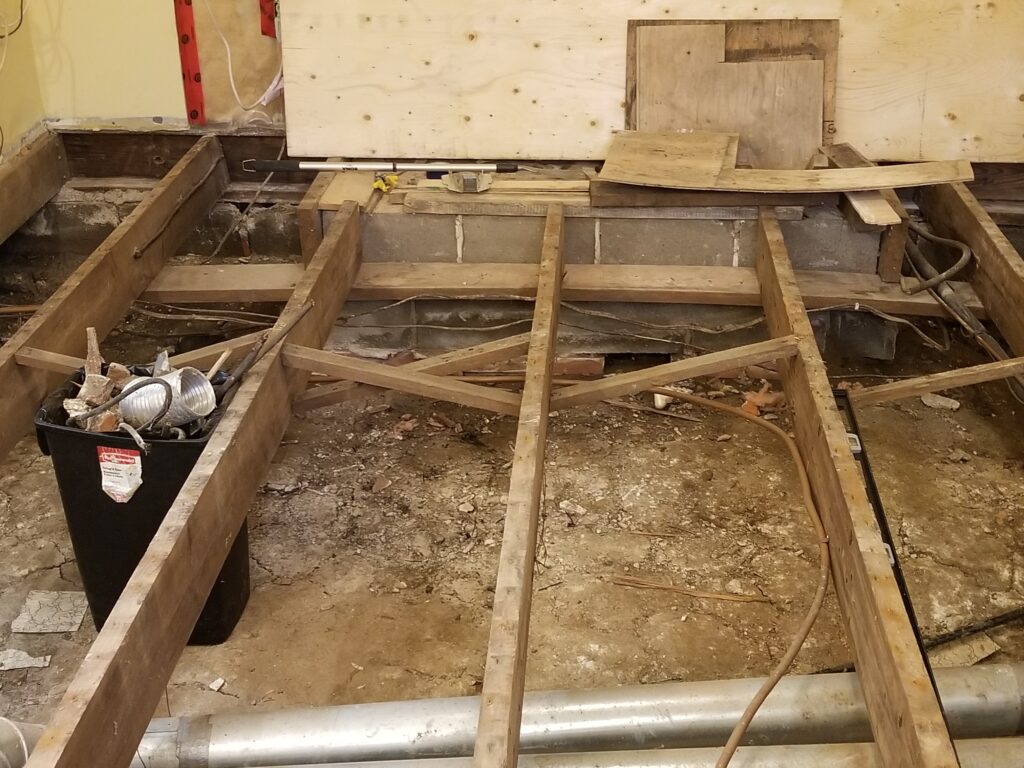
With the old tongue and groove subfloor removed I could tackle this hump. Earlier my son had taken the top layer of brick down. The hearth used to stick up through the floor – I wanted it out of sight and out of mind.
Fixing the Hump
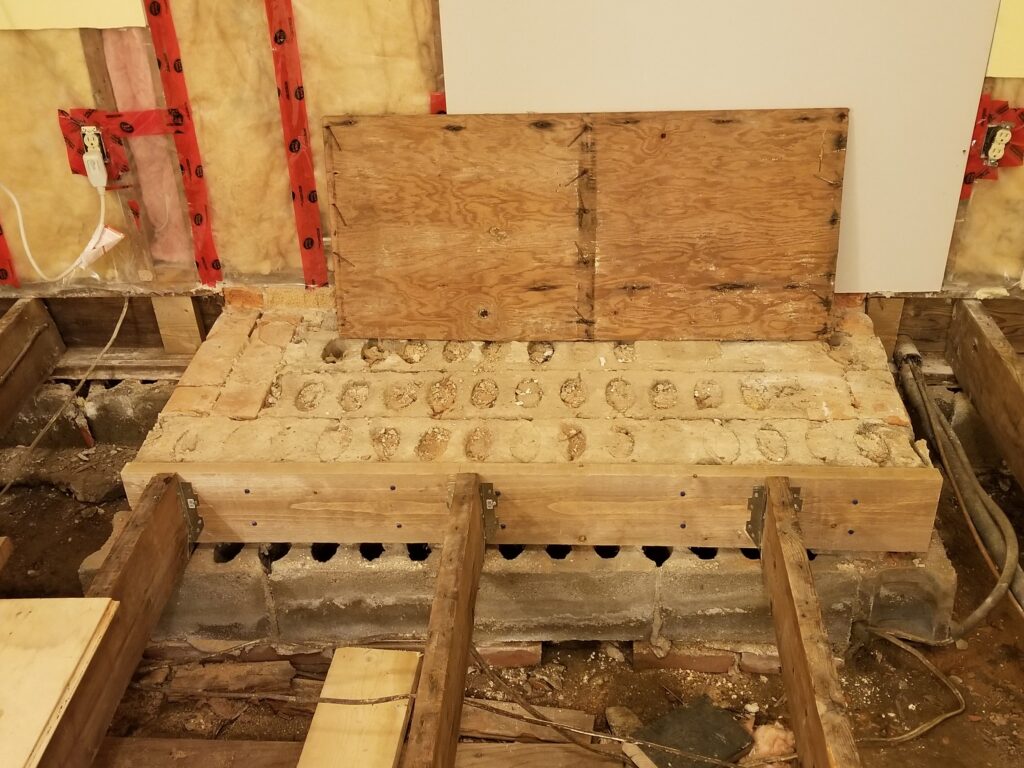
I re-routed some of the wiring through the wall and out of my way. Then I attached a pressure treated 2 x 6 to the blocks with appropriate masonry screws. After trimming the joists just enough to fit, I attached them to the 2 x 6 with joist hangers and properly sized nails. This had the effect of dropping the center of my living room floor at least an inch (I think it was really 1-1/2″, maybe even two) and the hump was now gone.
In case it isn’t clear from the above picture, the north wall of my crawlspace is a single block high. There are absolutely no footings – just a plop of mortar or cement and then the block. My house has no footings. Sill plates are not attached to the block either. Whoever built the house just slapped down a dollop of mortar and set the sill plate on top. Somehow it’s still standing 60 years later so I kept my focus on what I could fix or improve.
A Few Odds and Ends…
With this part of the living room floor open and the crawlspace accessible, I took full advantage. I added a 3rd light in the crawl and a bunch of plugs where they were lacking. Then I ran Cat 6 Ethernet cable to my office, my sons room and the north wall of my living room. Along with that I ran antenna cables and internet cables to any place I thought they might be needed.
Before closing everything up, I also removed any debris that would interfere with encapsulating and insulating the crawlspace. Plus I sucked up six decades of cobwebs and dead spiders with the shop vac. You guys, the cobwebs were so thick in places it was like sucking up batt insulation.
Putting it Back Together…
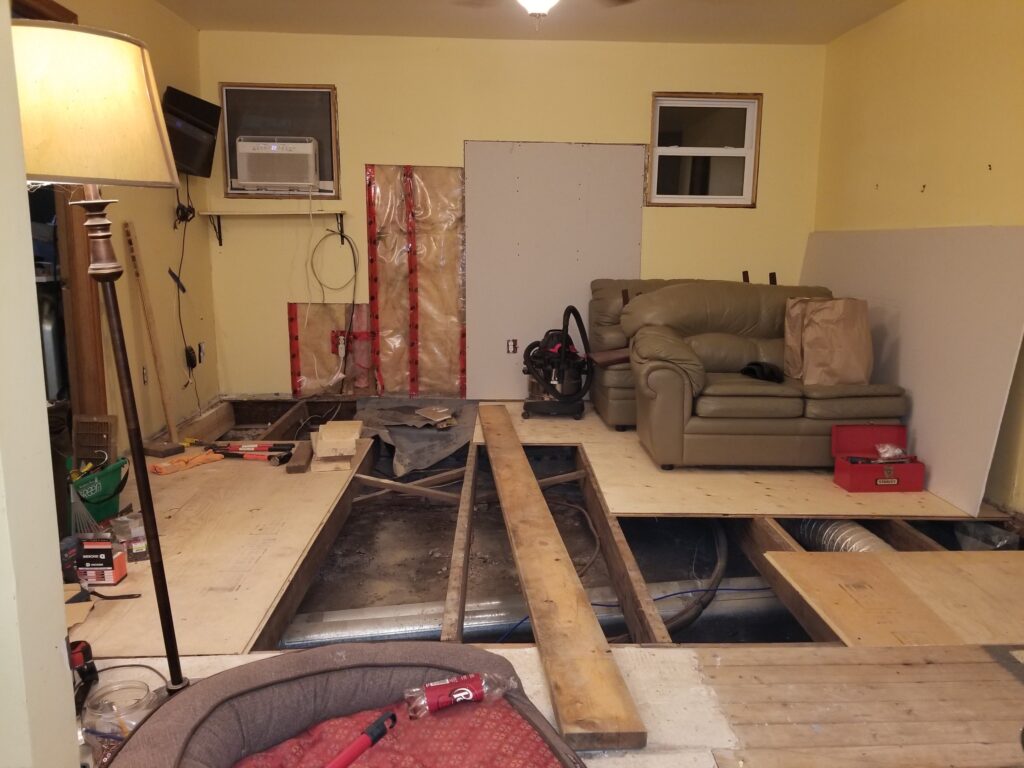
With everything I wanted to do in the back half of my crawl done, it was time to lay some plywood.
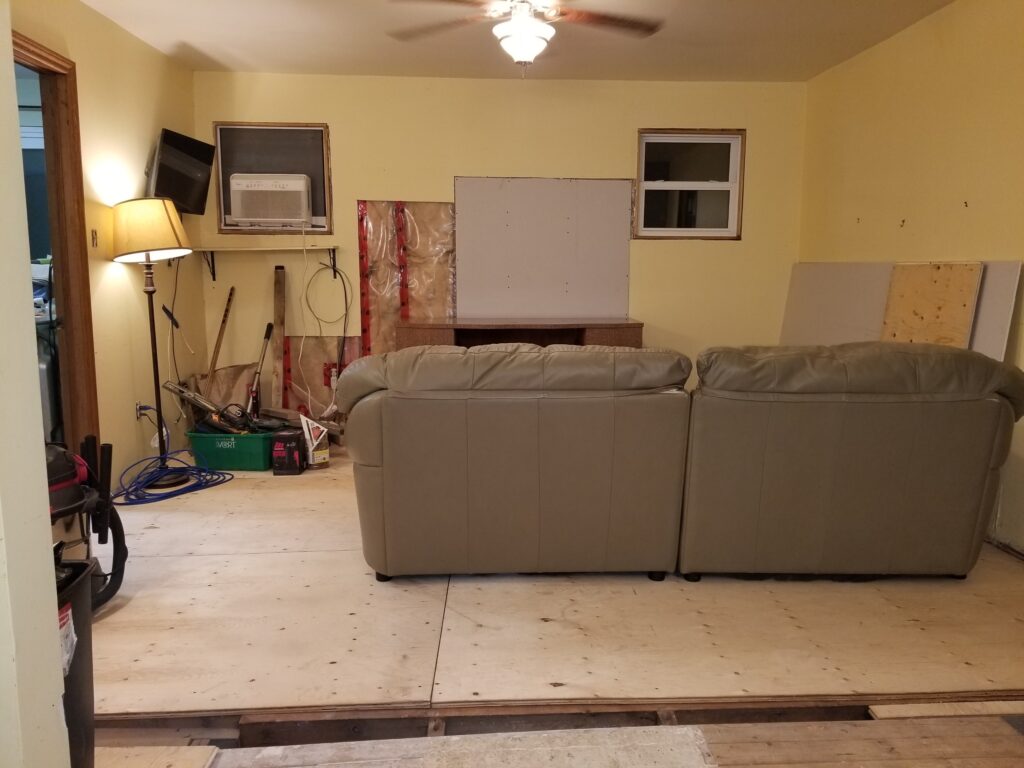
Bear with me while I point out some details here. First look at the back of the couch where the two sections meet. Prior to all of this the 2 sections would have angled away from each other. Next look at the buffet along the back wall – it looks pretty level doesn’t it? Then look at the light. That section of floor used to have such a significant slope to it the light would have looked like it was leaning back. It’s the main reason I wall-mounted the TV. I lived with that hump for 30 years, and it is finally gone!
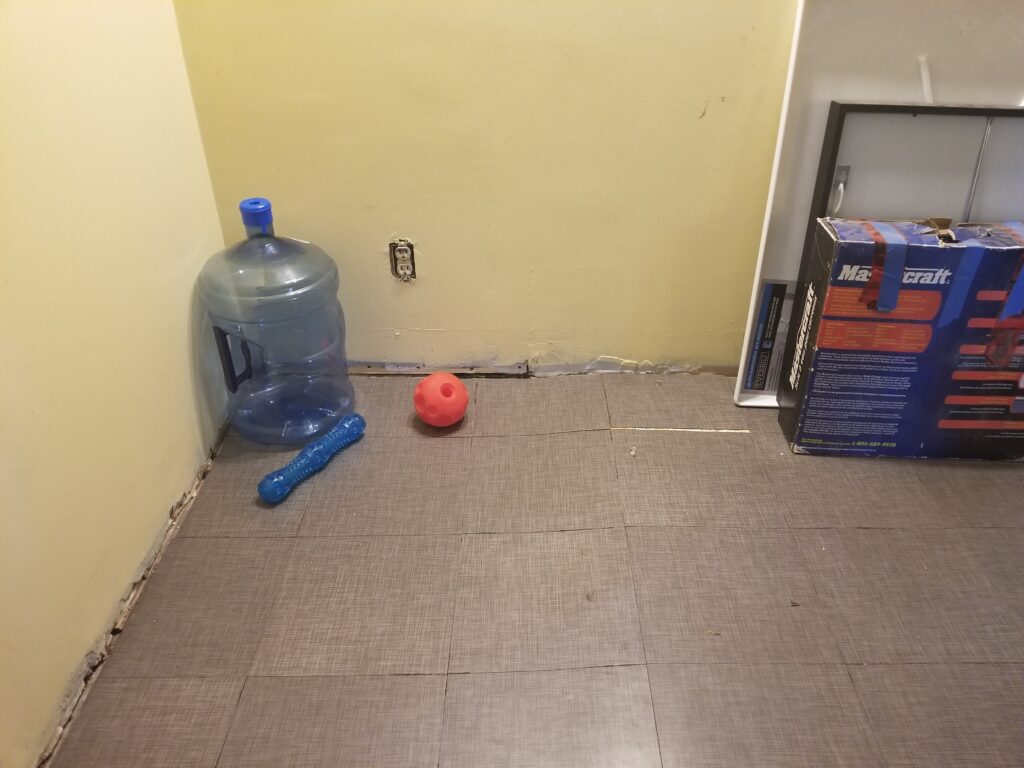 Next up the really hard stuff – the front of my crawlspace and that drop.
Next up the really hard stuff – the front of my crawlspace and that drop.


One thought on “Tackling the Hump in the Floor”